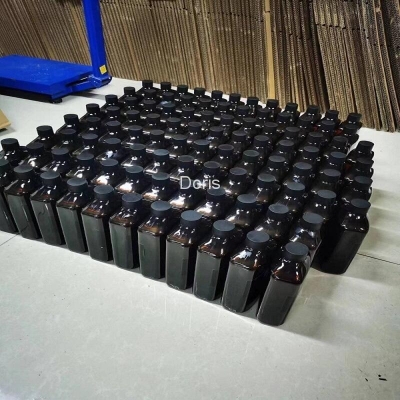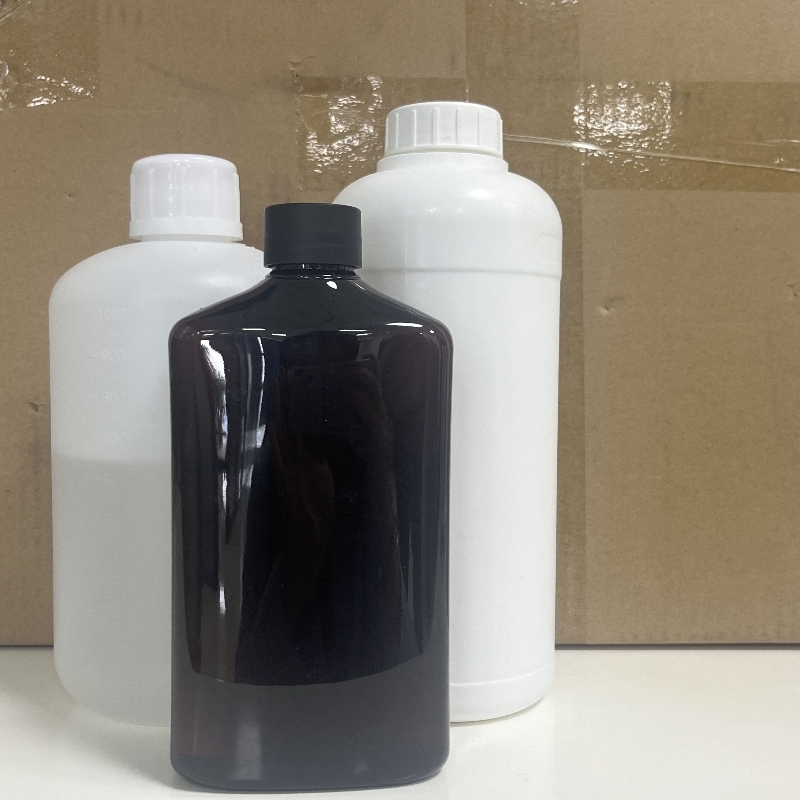-
Categories
-
Pharmaceutical Intermediates
-
Active Pharmaceutical Ingredients
-
Food Additives
- Industrial Coatings
- Agrochemicals
- Dyes and Pigments
- Surfactant
- Flavors and Fragrances
- Chemical Reagents
- Catalyst and Auxiliary
- Natural Products
- Inorganic Chemistry
-
Organic Chemistry
-
Biochemical Engineering
- Analytical Chemistry
- Cosmetic Ingredient
-
Pharmaceutical Intermediates
Promotion
ECHEMI Mall
Wholesale
Weekly Price
Exhibition
News
-
Trade Service
Recently, a recent report on the success rate of drug clinical development showed that the average success rate of drug development projects from phase 1 clinical trials to the approval of the US FDA for marketing in the past ten years was 7.
9%, and the average time required was 10.
5 years
.
Public information shows that the report was jointly released by BIO (Biotechnology Innovation Organization), Informa Pharma Intelligence, and QLS, one of the world's largest biotechnology industry organizations.
The analysis found that the success rate from phase 1 to phase 2 clinical is 52.
0% (n=4414), which is relatively high.
One of the reasons is that the safety of the main test drug at this stage does not depend on the effectiveness of the candidate drug
.
Consistent with previous studies on the conversion success rate of the drug development phase, the success rate of phase 2 clinical to phase 3 clinical is the lowest among the four phases , at 28.
The success rate from phase 2 to phase 3 is the lowest among the four stages
Through computational analysis, the researchers found that only 7.
9% of these drug development projects (n=12,728) were able to successfully progress from phase 1 clinical trials to the final stage of FDA approval
.
However, this success rate varies greatly in different disease fields
Researchers analyzed 6151 successful drug development projects during the period from 2011 to 2020, and found that it takes an average of 10.
5 years for a drug from phase 1 clinical to finally obtain regulatory approval
.
Among them, it takes an average of 2.
The decline in R&D productivity has long plagued pharmaceutical companies
.
.
In 2010, the clinical success rate of Pfizer's drugs dropped to 2% (a decline that exceeded that of many peers)
.
From then on, Pfizer began to focus on reversing the situation, working from multiple aspects to improve R&D productivity
.
These efforts have laid a solid foundation for the effective and rapid advancement of projects including the COVID-19 vaccine, and enabled Pfizer to increase its end-to-end clinical success rate from 2% to 21% in the past 10 years, a 10-fold increase
Pfizer's end-to-end clinical success rate has increased from 2% to 21% in the past 10 years, a 10-fold increase
The following is the main content of the full text (with supplements)
.
The quality of success has not been reduced: the progress of the innovation plan is ensured
While increasing the success rate, Pfizer's innovation quality has not declined
.
Of the NME/new BLA approved by Pfizer from 2016 to 2020, 75% have obtained at least one regulatory acceleration certification , compared with 67% of industry peers (Figure 2)
.
This shows that a higher success rate is achieved without sacrificing the quality of innovation
Of the NME/new BLA approved by Pfizer from 2016 to 2020, 75% have obtained at least one regulatory acceleration designation
Figure 2.
From 2016 to 2020, the percentage of new molecular entities (NMEs) that have at least one regulatory acceleration designation
Regulatory identification includes breakthrough treatment, priority review, fast track, and accelerated approval
.
This is calculated using a 5-year rolling average.
Loss factors in life cycle management
The success rate of new products is a key indicator to measure the achievements of innovative new molecules
.
However, the success rate of product extensions (PEs) also affects R&D productivity, because PE projects also require a lot of time and investment to make progress
.
Between 2016 and 2020, PE projects accounted for more than one-third of Pfizer's Phase II total and approximately two-thirds of Phase III/approved numbers (Figure 3)
.
Figure 3.
Comparison of Pfizer's New Molecular Entities (NMEs) and Product Extensions (PE) Phase II, Phase III, and approval success rates from 2016 to 2020
The definition of success rate is the same as in Figure 1
.
N refers to the total number of NME or PE projects at this stage during the analysis period
.
Except for Phase III, Pfizer's PE success rate in each development stage is comparable to that of NME
.
PE’s Phase III failure rate is higher, partly due to the failure of Pfizer’s PD-L1 Bavencio (avelumab, co-developed with Merck KGaA) in oncology
.
Although Bavencio was successful in the Phase III central study and was registered in 4 indications, it failed in 6 phase III studies covering four tumor types (Figure 3)
.
.
PE’s Phase III failure rate is higher, partly due to the failure of Pfizer’s PD-L1 Bavencio (avelumab, co-developed with Merck KGaA) in oncology
.
Since then, Pfizer has increasingly emphasized the need to focus on therapies with new targets or designs, as well as the opportunities for precision medicine when appropriate, in order to be able to provide the greatest benefits to patients in need
.
Case study: ADC drugs
Case study: ADC drugs Adopting new technologies usually requires a lot of time and resources, as Pfizer’s experience in ADCs shows
.
Encouraged by the early prospects of ADCs, Pfizer has invested heavily in protein and drug payload technologies, which are two key factors in the development of the most advanced ADCs
.
Although five ADCs [including Pfizer’s Mylotarg® (gemtuzumab ozogamicin) and Besponsa® (inotuzumab ozogamicin)] have been approved by the US FDA so far, the overall impact of this approach proved that the benefits to patients were not as good as expected.
The company eventually Decided to reduce its internal efforts
.
This experience tells the company that when deciding whether to invest in a complex new category, it should consider a measured investment approach and cooperate with external partners with relevant expertise
.
Concluding remarks
The cost of failure remains a major challenge for the biopharmaceutical industry
.
Ten years ago, Pfizer began its journey to increase its R&D productivity
.
As discussed in a recent article published by Pfizer , Pfizer focuses on improving the success rate of Phase II, where it has the largest gap with its peers
.
.
One of the key drivers for Pfizer to increase productivity is a model that enables early decision-making: decisively eliminate failed pipelines early, and take calculated risks to accelerate the arrival of successful pipelines
.
.
At the same time, Pfizer has also taken some steps to take advantage of the power of digital/artificial intelligence
.
For example, it launched an immune AI collaboration with CytoReason Co.
, Ltd.
to improve the discovery of targets and biomarkers in immunology and oncology
.
Based on publicly available anthropomics data and high-value clinical omics data from Pfizer clinical trials, this collaboration provides insights for several projects, increases confidence in the immunology CCR6 project, and evaluates the targets of newly discovered projects Provide regular support
.
Although these efforts are still in the early stages, Pfizer has identified digital/artificial intelligence as a driving force for further productivity improvements
.
.
The transformation of Pfizer's research and development has laid a solid foundation for the "speed of light" progress of Pfizer's COVID-19 vaccine, and the experience learned from this model is being applied to other key projects in the product portfolio
.
The many experiences shared here are also beneficial to other biopharmaceutical R&D institutions
.







